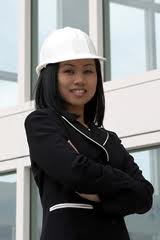By Nicole C. Woitowich, PhD
Academic conferences and symposia provide scientists with the opportunity to learn about the most cutting edge research, establish professional networks and collaboration, and foster the exchange of ideas among colleagues. But for those invited to speak at a conference, it can provide the additional benefit of increased visibility and professional recognition within one’s field. However, for female scientists their invitation to present might have gotten “lost in the mail.”
A new study published in the journal, PloS One, analyzed the ratio of female to male speakers at conferences held by two scientific societies between the years 1999 and 2015 [1]. The authors found that neither the number of female presenters nor female symposia organizers increased significantly over time.
Lead author of the study, Stephanie Sardelis found this to be alarming, “We expected there to be more opportunity for women to excel…especially since both societies have been improving their gender policies,” she says.
Unfortunately, these results are not surprising. Several other studies have shown that women are underrepresented at academic symposia [2,3], and when women are given the chance to present, they speak for less time compared to their male peers [4]. In an attempt to mitigate gender bias at academic conferences the solution seems all too simple: Invite more women! Specifically, invite more women to be symposia organizers. Sardelis and her colleague, Dr. Joshua Drew, found that when the number of female symposia organizers increased, so did the number of female presenters. This suggests that women may be more attuned to gender bias and in turn, encourage the promotion of their female colleagues at conferences or symposia.
In addition to increasing the number of female conference organizers, Sardelis and her colleague suggest that scientific societies provide adequate travel funds, child-friendly facilities, and enforce a strict Code of Conduct that includes zero-tolerance for abuse towards women, minorities, and differently abled attendees.
Sardelis believes that gender bias at conferences is indicative of a more systemic problem harbored by academia as a culture. “To reduce the gender gap, all scientists must eliminate the misconception that women are less competent than their male colleagues,” she shares.
Yet, Sardelis remains confident that steps are being taken in the right direction after attending a recent conference citing numerous female speakers, gender neutral bathrooms and nursing rooms, along with a focus group dedicated to women at scientific conferences. “[This] was a testament to the fact that gender disparity is a serious issue, but one that is being (albeit slowly) targeted by the scientific community,” she says.
Let’s hope the scientific community can pick up the pace.
Sources:
- Sardelis and Drew, PLoS One. 2016; 11(7):e0160015.
- Casadevall and Handelsman, mBio. 2014; 5(1):e00846-13.
- Schroeder et al., J Evol Biol. 2013; 26(9):2063-2069.
- Jones et al., PeerJ. 2014; 2:e627.

 Northwestern University and the University of Chicago have launched the Chicago Collaboration for Women in Science, Technology, Engineering, and Mathematics, a three-year effort to enhance the recruitment and advancement of women faculty members in those fields.
Northwestern University and the University of Chicago have launched the Chicago Collaboration for Women in Science, Technology, Engineering, and Mathematics, a three-year effort to enhance the recruitment and advancement of women faculty members in those fields.